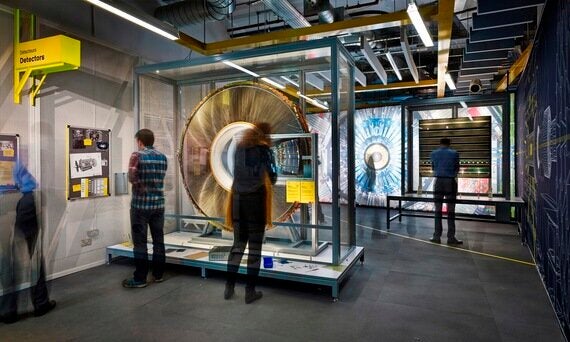
In its exciting and bold new exhibition on the Large Hadron Collider, the Science Museum scores a spectacular success in making the world's most famous scientific experiment fascinating and understandable.
The Large Hadron Collider is a huge particle accelerator based at the CERN laboratory in Geneva, Switzerland. And when I say 'huge', the Collider is 27 kilometres in circumference so I don't think I'm exaggerating here. It is being used by thousands of scientists and engineers from around the world for a whole range of experiments. But undeniably its most famous achievement to date is the discovery of the Higgs boson.
We've all heard about Higgs boson but understand it? Well, few of us would like to stand up and give a lecture on it, let's just go with that. So how has the Science Museum achieved in translating such a complex subject into something the layman will not just understand but also find interesting? By bringing together a unique creative team that has devised a dynamic exhibition using a blend of immersive theatre, video and sound art.
The exhibition starts off with a 15 minute film in a theatre which replicates the same one at CERN. The film is pretty useful if, like me, you're a bit of a Marty Mcfly when it comes to advanced physics ("What the hell's a jigawatt?").
Part-lecture, part entertainment (complete with a cameo from Professor Brian Cox) the film gives a great basic understanding on what the Large Hadron Collider was set up to achieve and how it does it.
After the film, the exhibition continues with a virtual tour of CERN, the particle physics laboratory which houses the Collider and which cost €10billion to build. Almost a city in itself, CERN is supported by 20 member states from around the world, including the United Kingdom, and has 10,000 people working there.
The behind-the-scenes set-up allows you to 'meet' with scientists and engineers who explain what their role is. You can also have a look around a researcher's workstation. And there are plenty of diagrams and flipcharts dotted around to explain the technical stuff such as atoms, hadrons and protons, how protons are charged and then what comes out when they are smashed together, which is how the Higgs boson was found.
And there are some wonderful exhibit pieces such as the 15-metre magnets used in the Collider itself and a CMS calorimeter crystal which measures the energy of particles. It's also a pretty nice touch having the (empty) champagne bottle Peter Higgs opened the night before the Higgs boson discovery was announced to the world.
Personally I'd still be reluctant to stand up and give a lecture on Collider, fundamental physics and the subatomic world but after going around the exhibition, I am pretty deft at explaining how and why the particle collision in the Large Hadron Collider is so ground-breaking. And just as importantly, I want to know more about what is left to discover.
To May 6, 2014
Science Museum, London